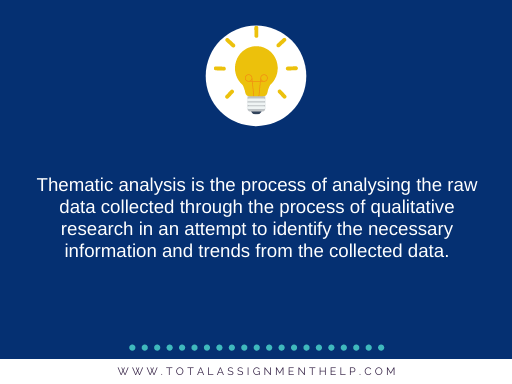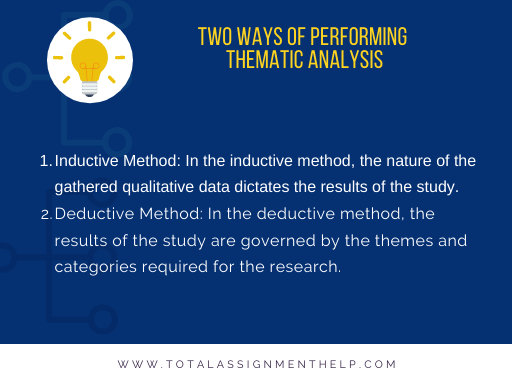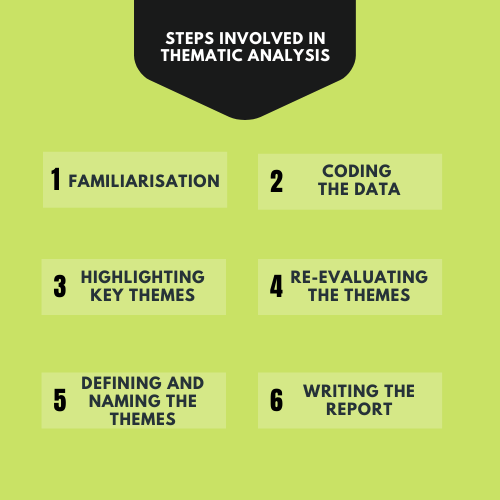What Is A Thematic Analysis, And How To Do It?

Thematic analysis is one of the most fundamental frameworks of analysis on qualitative data. Since qualitative data is the type of data which is gathered directly from the primary sources, through interviews, surveys, focus groups etc., it is important that this data is analyzed suitably to identify the relevant trends and turn raw data into valuable information.
In this article, we will explore different aspects related to thematic analysis, such as:
- What is a thematic analysis?
- When is a thematic analysis used?
- How to do a thematic analysis?
Subscribe our YouTube channel for more related videos
Let’s get started!
What is a thematic analysis?
Thematic analysis is the process of analyzing the raw data collected through the process of qualitative research in an attempt to identify the necessary information and trends from the collected data.
Since a majority of the data collected in qualitative research is non-numeric, hence the standard statistical methods and other methods of analysis prove to be non-applicable as all of them involve mathematical calculations.
In a thematic analysis, the qualitative data is gathered, transformed, arranged and analyzed, in order to make the raw data useful by identifying important pieces of information. The process of thematic analysis was primarily used in psychology, for patient evaluation; however, due to its effectiveness, it is now being utilized in different academic fields for research purposes.
Process of thematic analysis is quite flexible and adaptive in nature as it enables the researcher to analyze the data and identify key information as per their requirement.
When is a thematic analysis used?
Thematic Analysis is generally used in qualitative research formats, where the main purpose of the research is to identify some trend or highlight certain behaviour, among the sample population. Thematic analysis is mainly done on data gathered through, transcripts of interviews, focus groups, survey questionnaires, social media profiles, and all other forms of non-numeric qualitative data. Thematic analysis emerges as the ideal method of performing analysis on such forms of data, which involves a difference of opinion, and a huge variation in the nature of responses.
In order to make the process of studying the large set of data, and make the process of thematic analysis easier, the researcher must first, turn the responses in readable form, which is then, carefully studied. After studying the data, the researcher then attempts to make sense of the data, and figures out a certain, pattern of behaviour, trends or important breakthrough, depending on the nature of the data.
The key factors, which can affect the results of thematic analysis consists of the nature of the data, the skills of the researcher and the research objective. It is these three aspects, which can influence the scope and level of difficulty of the thematic analysis.
There are two ways of performing thematic analysis, which are:
- Inductive Method: Inductive method thematic analysis involves, formulating the observations and the results of the study, on nature the data. In the inductive method, the nature of the gathered qualitative data dictates the results of the study.
- Deductive Method: Deductive method of thematic analysis, involves, approaching the analysis of the data with pre-determined themes, and categories, according to which the data is evaluated. In this type of thematic analysis, the results of the study are governed by the themes and categories required for the research.
How to do a thematic analysis?
As mentioned earlier, thematic analysis is one of the most fundamental forms of research and involves in-depth study and skill to complete the analysis effectively. Below are the six key steps involved in the thematic analysis as identified by Virginia Braun and Victoria Clarke:
- Familiarisation
- Coding the Data
- Highlighting Key Themes
- Re-evaluating the Themes
- Defining and Naming the Themes
- Writing the Report
These 6 key steps involve moving back and forth through the data in order to make a definitive thematic analysis. Let us dig a little deeper, have a closer look at the activities involved in each of these steps.
Step 1: Familiarisation
It is the first step in the process of thematic analysis. It involves going through all of the data in organizing the research. In the case of interview recordings, and other audio-visual forms of raw data, it is important to transcribe the data into a readable format, so that is easier to visualize the data. While going through the data, the research will, take preliminary notes and identify the basic themes which will then be used for the analysis.
It is important to spend adequate time in getting familiarised with the data, as it enables the researcher to adapt to the nature of the collected information, and develop an easier approach for their research.
After, going over the data carefully, the researcher then, moves on to turning the audio recordings into transcription. The step is also crucial, as it helps the researcher to study the data more effectively. Once this is taken care of, the next step of the familiarisation process, to prioritize and to organize the data into a manageable form, so that it is more efficient for the research.
Step 2: Coding the Data
After familiarising with the data, the next step in the thematic analysis is coding the transcripts of the organized data. Since the data involved in thematic analysis is non–numeric in nature, therefore it is important for the research to mark and code the text, with the relevant points, and keywords, which can then be used by the researcher to make an effective analysis.
The codes used for the research vary from one research to another. Therefore, it is the skills and experience of the researcher, with which they code the text, so as to help them make the process of analysis easier. It can be in the form of, numbers, colour codes, keywords, abbreviations etc. as per the convenience of the researcher.
Coding the data has an additional benefit of saving time and making the process of analysis much more organized and efficient.
Step 3: Highlighting Key Themes
It is where the “Theme” in thematic comes in. Highlighting the themes is one of the most important steps of the thematic analysis. It involves, studying the codes, and keywords, identified in the previous step, and categorizing the data in different themes.
The themes highlighted in this step serves as a map which guides the research. Therefore it is important for the researchers, to spend time in studying the data and highlighting the relevant themes.
Step 4: Reviewing the Themes
Once you have identified the themes, it is important to review them and make sure that the themes identified are suitable for the main objective of the research. It is in this step, where the researcher, can refine the selected themes and make improvements as per their convenience.
Step 5: Defining and Naming the Themes
After confirming the themes which are suitable for the research, it is important to describe them and set definitive criteria, which can help you in categorizing the data, into each theme, more effectively. Since the nature of the data, involved in thematic analysis is non-numeric in nature, it is vital, to set criteria, to make sure that the data, is not miss-interpreted. It helps in reducing human error and saves time in the process.
Step 6: Writing the Report
The final step, in the process of thematic analysis, is to study the categorized data carefully and make relevant observations and inferences. It is where the skill and experience of the researcher come in. It takes great effort to study the transcribed data and identify the inferences adequately. It is why; the researcher must take great caution in this step.
Once this is done, the data is then ready to be turned into the final report of the thematic analysis.
Hope this article helped you in understanding the various steps involved in the process of thematic analysis!
Total Assignment Help
Incase, you are looking for an opportunity to work from home and earn big money. TotalAssignmenthelp Affiliate program is the best choice for you.
Do visit :https://www.totalassignmenthelp.com/affiliate-program for more details
Total Assignment help is an online assignment help service available in 9 countries. Our local operations span across Australia, US, UK, South east Asia and the Middle East. With extensive experience in academic writing, Total assignment help has a strong track record delivering quality writing at a nominal price that meet the unique needs of students in our local markets.
We have specialized network of highly trained writers, who can provide best possible assignment help solution for all your needs. Next time you are looking for assignment help, make sure to give us a try.
Looking for Assignment Help from Top Experts ?
Get the best Assignment Help from leading experts from the field of academics with assured onetime, 100% plagiarism free and top Quality delivery.









